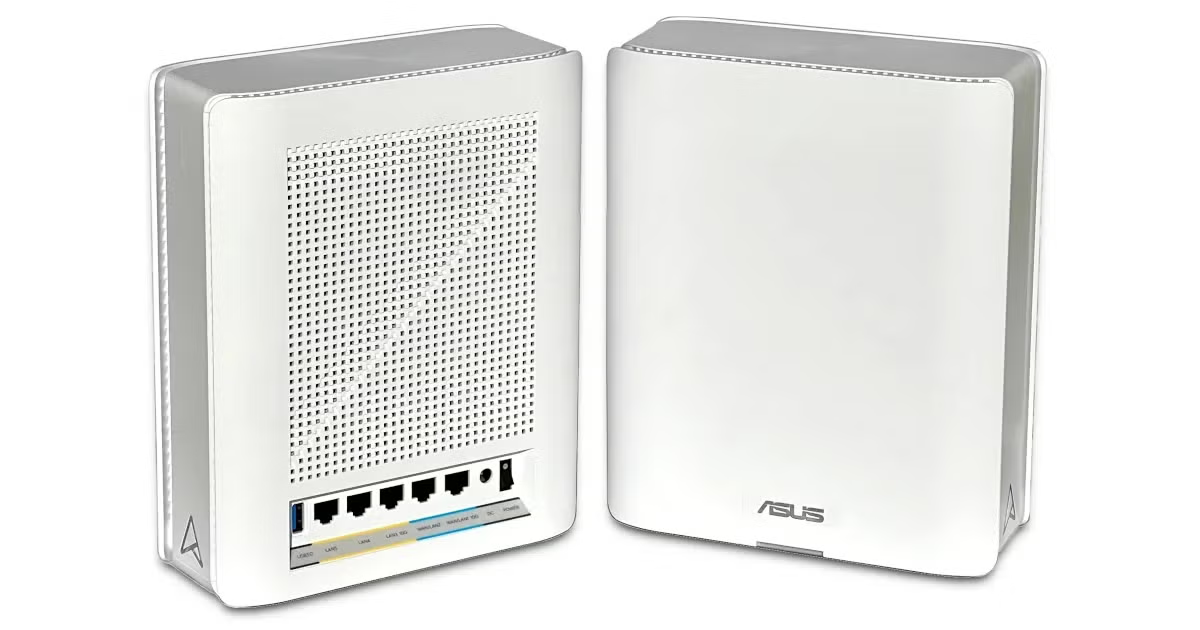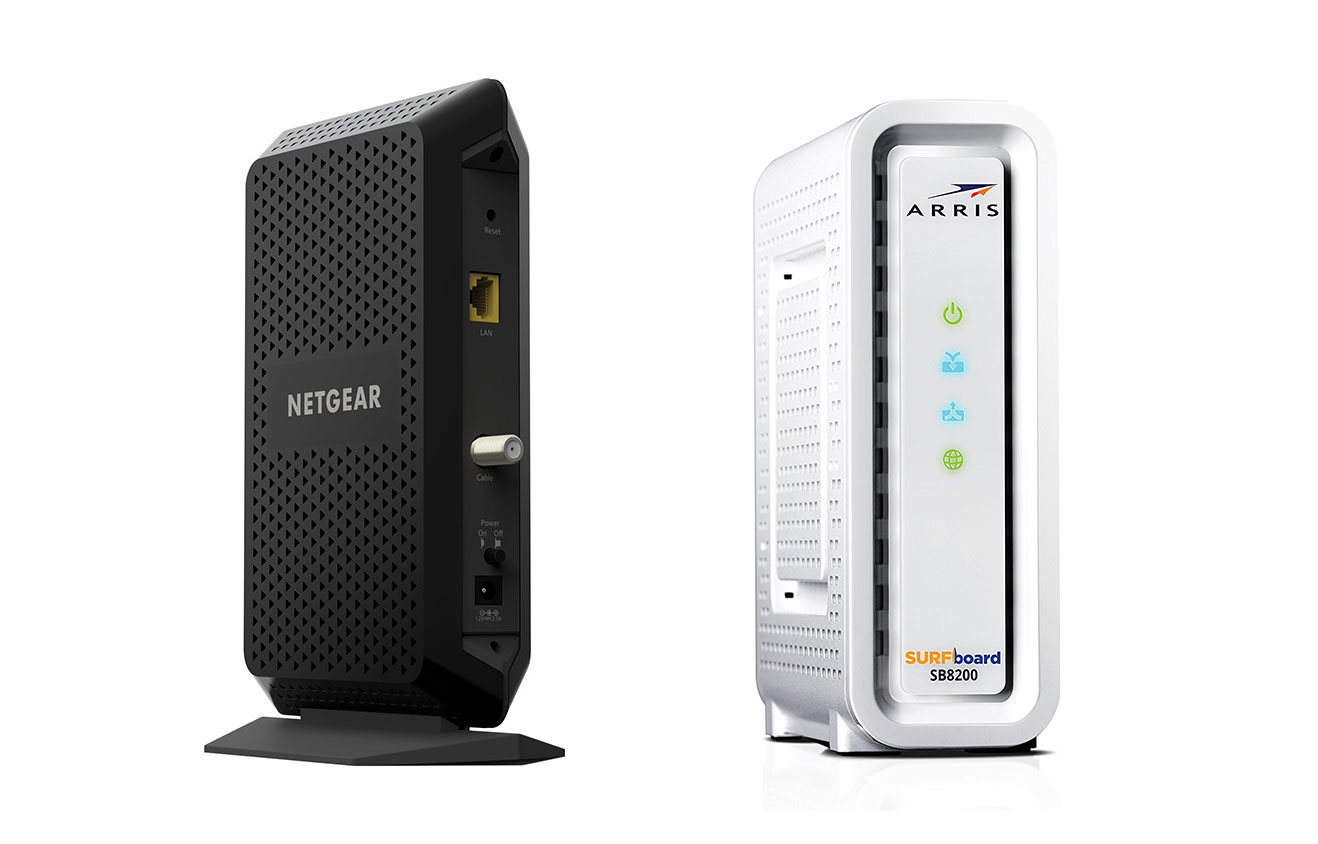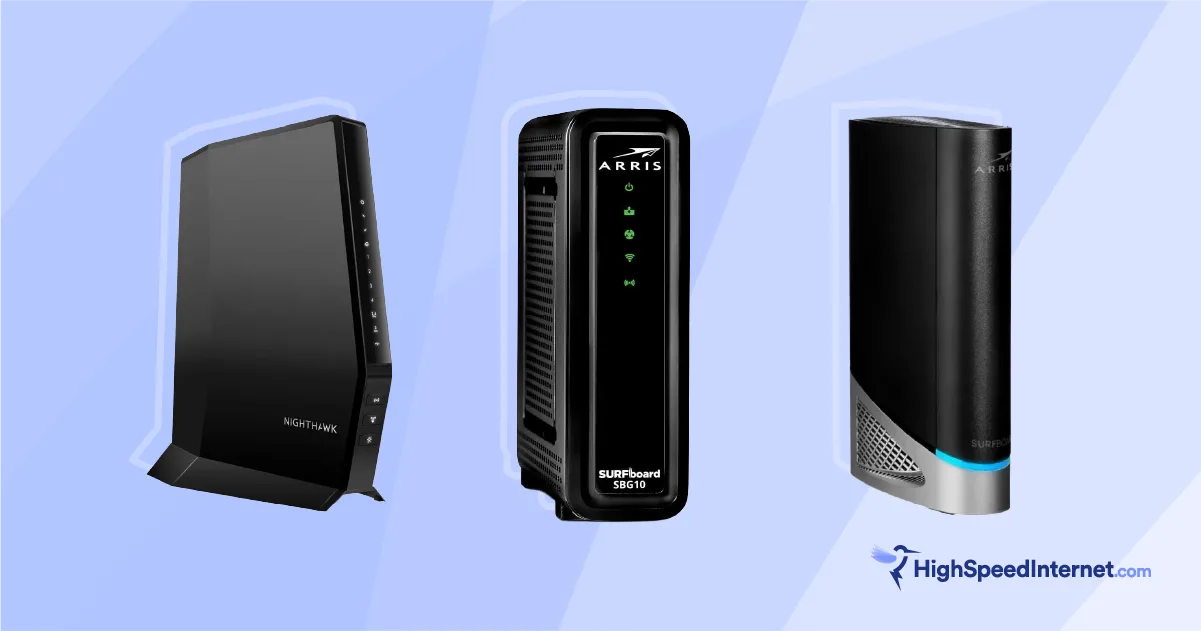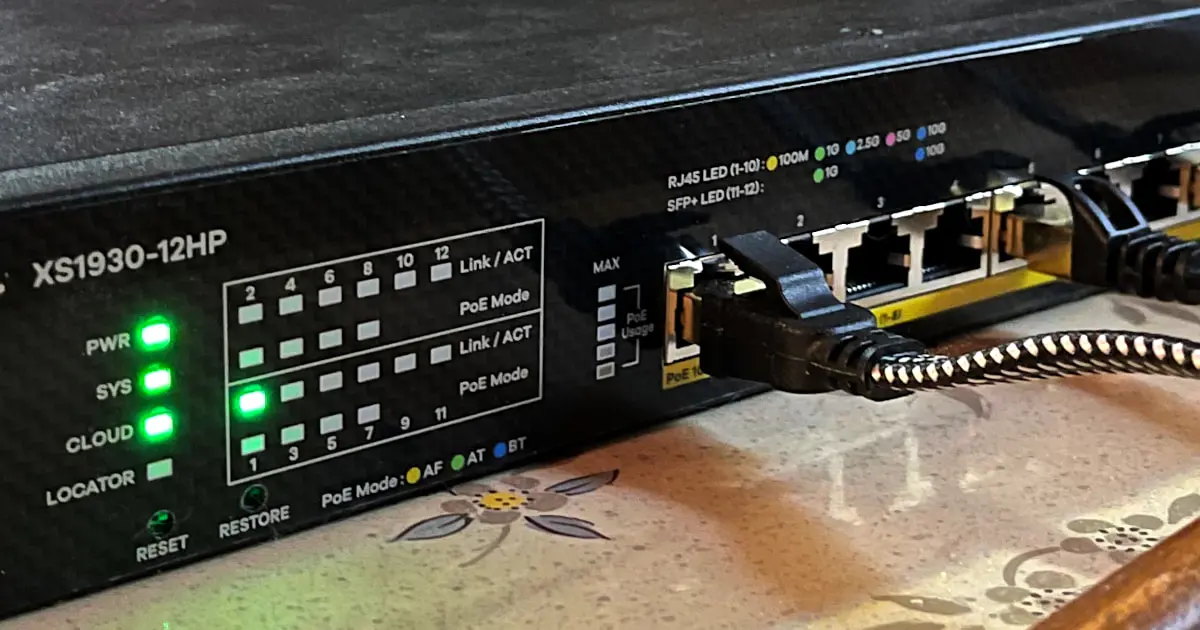Should You Rent or Buy Your Modem and Router?
Find out if it’s cheaper to pay upfront now or continue to pay monthly fees
Mar 3, 2025 | Share
Equipment Guides, How-To
Rent a modem or router (or both) from your internet provider if you want upgrades, replacements, and technical support at no additional cost to you.
Buy your equipment if you want to save money over the long run and have more control over your internet connection. Just know that you’ll be responsible for any upgrade or replacement costs.
Overall, the pros and cons of renting or buying your modem and router depend on your internet provider and the amount of money you’re willing to spend. I’ll explain how to know what’s best for you.
Want the best internet provider with the lowest equipment fees?
We get it. No one wants to pay a monthly fee for equipment they’ll never own. Enter your zip code below to find the best internet provider with the cheapest rental fees.
In this guide:
Is it cheaper to buy or rent a router? | Modem and router rental fees by provider | The best cheap routers | Understanding what you have | Pros and cons | How to buy a new modem | How to buy a new router | My verdict
In this guide:
- Is it cheaper to buy or rent a router?
- Modem and router rental fees by provider
- The best cheap routers
- Understanding what you have
- Pros and cons
- How to buy a new modem
- How to buy a new router
- My verdict
Is it cheaper to buy or rent your router and modem?
You don’t need to purchase a standalone modem if your internet provider supplies one at no extra charge. After all, you don’t own your internet connection, so why own the modem? Let your internet provider deal with that aspect of your service. You probably (hopefully) have the best modem for your connection anyway.
There may be cases when your provider’s supplied modem is of low quality, and you want one with better performance and stability. In this case, buying a standalone modem may save you money and lots of frustration.
However, your home network is yours, so owning devices on your side of the modem makes perfect sense—including the router. Purchasing a standalone router or mesh system is ideal if the equipment supplied by your internet provider is outdated and there’s no sign of an upgrade. Gamers may want specific features that aren’t included with their provider’s router.
But here’s the thing: many internet providers now supply you with wireless gateways (modem/router combos). You can still connect a standalone router to a gateway and use its Wi-Fi instead, but I only suggest doing so if the router you want has better Wi-Fi than the gateway.
Replacing the gateway entirely may be cheaper, depending on what you buy. They’re a hit or miss when it comes to saving money, and I’ll show you exactly why by using Xfinity as an example.
But first, let’s take a look at the annual rental fees from 14 internet providers.
Modem and router rental fees by provider
| Provider | Modem fee | Router fee | Annual fee (max) |
|---|---|---|---|
| AT&T | Included | Included | N/A |
| CenturyLink | Up to $15.00/mo. | Included | $180.00/yr. |
| Cox | $10.99/mo. | Included | $131.88/yr. |
| Frontier | $10.00/mo. | None | $120.00/yr. |
| Google Fiber | No charge | No charge | N/A |
| Xtream | $12.00/mo. | $10.00/mo. | $264.00/yr. |
| Optimum | $10.00/mo. | Included | $120.00/yr. |
| Astound | $12.95/mo. | $10.95–$12.95/mo. | $310.80/yr. |
| Spectrum | No charge | $5.00/mo. | $60.00/yr. |
| Verizon Fios | No charge | $15.00/mo. | $180.00/yr. |
| Kinetic | $9.99–$11.99/mo. | Included | $143.88/yr. |
| WOW! Internet | $14.00/mo. | $10.00/mo. | $288.00/yr. |
| Xfinity | $15.00/mo. | Included | $180.00/yr. |
Data as of 03/03/25. Offers and availability may vary by location and are subject to change.
In most cases, buying equipment isn’t cheaper than renting when you consider technical support, free replacements due to hardware failures, and free upgrades.
However, let’s see if purchasing a wireless gateway is cheaper than renting from one of the nation’s largest cable internet providers: Xfinity.
Are you paying too much for your modem and router?
You may need to switch providers for a better deal. Enter your zip code to see which providers are in your area.
Should you buy or rent your wireless gateway with Xfinity?
Xfinity customers spend roughly $180 per year renting the xFi Advanced Gateway (XB7). This device is based on Wi-Fi 6 and includes two phone jacks, three Gigabit Ethernet ports, and a 2.5 Gigabit Ethernet port—in other words, kapow! Right now, all that speed is overkill—you’re essentially riding the cutting edge of residential internet technology for $15 per month.
So, let’s pit the XB7 model against two wireless gateways you can buy—one with similar specifications and one with a similar price—to see if you save any money:
| Xfinity’s rental unit | Example gateway with comparable specs | Example gateway with a comparable price | |
|---|---|---|---|
| Model | xFi Gateway Gen 3 | ARRIS SURFboard G36 | Motorola MG7700 |
| Wi-Fi standard | Wi-Fi 6 | Wi-Fi 6 | Wi-Fi 5 |
| Wi-Fi class | AX3500 | AX3000 | AC1900 |
| Wi-Fi streams | 4×4 | 4×4 | 3×3 |
| 5 GHz max speed | 2,402Mbps | 2,402Mbps | 1,300Mbps |
| 2.4 GHz max speed | 1,150Mbps | 574Mbps | 600Mbps |
| Max cable speed | 2,370Mbps | 2,370Mbps | 940Mbps |
| Modem channels | 32×8 (v3.0) 2×2 (v3.1) | 32×8 (v3.0) 2×2 (v3.1) | 24×8 (v3.0) |
| 2.5 Gbps port? | Yes | Yes | No |
| Price | $180.00/yr. | $292.99* | $187.99* |
| View Xfinity Plans | View on Amazon | View on Amazon |
* Amazon.com price (as of 03/03/25 10:15 MST). See full disclaimer.
If you don’t want to rent, the compatible Motorola MG7700 wireless gateway costs $187.99, which is $8 more than what you’d pay to Xfinity in rental fees for an entire year. After your one-time purchase, the money stays in your pocket, right?
But look closer at the specs, and you’ll see that Motorola’s gateway is slower than Xfinity’s. It doesn’t even include the 2.5 Gigabit Ethernet port. Is it worth the downgrade? Absolutely not unless you have a slow internet connection and never intend to upgrade your plan.
Now, here’s where price comparisons really get interesting. The ARRIS SURFboard G36 is almost on par with Xfinity’s gateway—only the maximum 2.4 GHz speed is slower than Xfinity’s.
However, the cost of the ARRIS unit is roughly $64 cheaper than renting the Xfinity gateway over two years. You won’t save money until the third year, and by then, Xfinity will probably offer something even better than its current gateway at no additional cost (excluding inflation).
With both retail models, you’ll be responsible for upgrades and hardware replacements if the gateways fail. Plus, the only technical support made available to you will be through Motorola or ARRIS—maybe from Xfinity, too, if you’re lucky.
In summary, here are the reasons why you would buy or rent from Xfinity:
Reasons to rent:
- Free upgrades
- Free replacements
- Technical support
- Best compatibility
Reasons to buy:
- Features you want
- Private network management
- Cheaper overall cost (depending on the model)
The best cheap routers you can buy
The saying that “you get what you pay for” is generally true when it comes to electronics: buy a cheap device, and you get cheap performance. You’re not going to pay $60 for a router and see performance that zooms faster than The Flash.
Still, if you’re shopping for an inexpensive router, here are a few suggestions for the best budget routers you can buy based on my tests. Given that many internet connections are 1,000Mbps or less in download speed anyway (unless you have one of the fastest internet plans), these four routers should do the trick.
| Model | Tested Speed @ 40 ft.† | Price* | Get it |
|---|---|---|---|
| NETGEAR R6700AX | 434Mbps | $79.99 | View on Amazon |
| Reyee RG-E5 | 636Mbps | $119.99 | View on Amazon |
| TP-Link Archer AX21 | 428Mbps | $69.99 | View on Amazon |
| TP-Link Deco X55 | 339Mbps | $79.99‡ | View on Amazon |
* Amazon.com price (as of 03/03/25 10:15 MST). See full disclaimer.
† Speed recorded using a Wi-Fi 6 client and an 80 MHz channel.
‡ Price for one unit.
Understanding the home networking equipment you have
Your home or small office typically has one of two setups:
- 1x modem or fiber ONT + 1x router or mesh system
- 1x wireless gateway
Here’s a brief explanation of each device used:
Modem — Your cable or DSL internet connection plugs into this standalone device. You cannot access the internet without it, as it translates your provider’s radio signals into data your devices can use.
Optical Network Terminal (ONT) — Your fiber internet connection plugs into this standalone device. You cannot access the internet without it, as it translates your provider’s light signals into data your devices can use.
Router — This standalone device physically connects to your modem or ONT using an Ethernet cable. It creates and manages your home or office network by broadcasting your Wi-Fi connection and providing ports for wired devices. With mesh systems, the first unit wired to your modem or ONT serves as your router.
Wireless gateway — This device combines a modem or ONT and a router into one unit. Your internet connection plugs into this device, as do all wired devices via Ethernet cables. It broadcasts Wi-Fi, so you can access the internet without the annoying cables or a standalone router.
Renting vs. buying your router or modem
Pros and cons of renting a modem and router
![]() Pros:
Pros:
- Free tech support
- Free replacements
- Free upgrades
![]() Cons:
Cons:
- Monthly lease
- Possibly older hardware than what you could buy
- Higher overall expense over time
- Accessible by your provider (router)
The big takeaway with renting is getting free upgrades or a free replacement if the device fails. Plus, your internet provider can diagnose and possibly resolve issues remotely. Renting is also a good idea for roommates because the device isn’t one person’s property.
The drawback to renting is you won’t see automatic hardware upgrades. For example, you may rent a Wi-Fi 5 router from your provider but may never see a Wi-Fi 7 upgrade unless you request one (or when your Wi-Fi 6 router eventually fails).
Plus, your provider can log in to its supplied router remotely, see all your connected devices, and possibly see who uses them. While remote network management is seemingly in good faith, many customers may feel uncomfortable having a stranger observing devices used by children.
In a nutshell, renting is ideal for the following:
- Free upgrades and replacements
- Easy compatibility
- Remote troubleshooting
- Roommates
- Small businesses
- Employer-paid work-at-home internet
Pros and cons of buying a modem and router
![]() Pros:
Pros:
- Yours to keep
- Managed by you
- Chosen by you
![]() Cons:
Cons:
- Not upgradable for free
- Not replaced for free
- Not supported by your provider for free
The pros are straightforward: you can select and keep the device you want so long as it’s compatible with your internet provider’s connection. You can upgrade as needed and manage your devices—not your internet provider. You save a little money each month too.
If you choose to purchase a router, you may find one that has a better range or better parental controls than the unit supplied by your internet provider. You can get high-quality products from brands like NETGEAR, Linksys, TP-Link, and ASUS. Better yet, you could install a mesh networking kit that spreads Wi-Fi across your home or small office like a web.
The drawback to buying your equipment is the overall expense. If your modem, router, or gateway fails, the replacement comes out of your wallet. The burden of cost is also yours when you want to upgrade. Free technical support from your internet provider may or may not be available.
In a nutshell, buying is ideal for the following:
- Upgrading when you want
- Using the devices you want
- Managing your devices privately
- Troubleshooting experts
- Gamers who want the latest
- Better features
How to buy a new modem
If you’re set on purchasing a modem, there are a few factors to consider.
First and foremost, you can’t purchase just any modem. A cable modem doesn’t work with a DSL connection, for example. Second, the modem should line up with your internet plan’s speed. Unless you switch to a faster plan, there’s no reason to purchase a VDSL2 modem if your maximum DSL internet speed will be only 50Mbps.
Cable modems
Cable modems are based on the Data Over Cable Service Interface Specification (DOCSIS). It’s a standard that dictates how internet providers send and receive data using coaxial lines originally installed for cable TV.
Here are the six DOCSIS versions:
| Version | Year | Maximum download | Maximum upload |
|---|---|---|---|
| 1.0 | 1996 | 40Mbps | 10Mbps |
| 1.1 | 1999 | 40Mbps | 10Mbps |
| 2.0 | 2001 | 40Mbps | 30Mbps |
| 3.0 | 2006 | 1,000Mbps | 200Mbps |
| 3.1 | 2013 | 10,000Mbps | 1,000–2.000Mbps |
| 4.0 | 2019 | 10,000Mbps | 6,000Mbps |
So, if you’re shopping for a new cable modem and your plan supports up to 1,000Mbps, you need a DOCSIS 3.0 modem at the very least.
DSL modems
Buying a DSL modem isn’t quite like purchasing a cable modem. You just need to know the type of DSL service you already have before you invest. Here are the many different types of DSL technology in use:
| Version | Max download speed | Max upload speed |
|---|---|---|
| ADSL G.Lite | 1Mbps | 0.512Mbps |
| ADSL* | 9Mbps | 0.640Mbps |
| ADSL2* | 20Mbps | 0.850Mbps |
| ADSL2+ | 24Mbps | 1.3Mbps |
| VDSL* | 100Mbps | 40Mbps |
| VDSL2* | 200Mbps | 100Mbps |
| Vplus | 300Mbps | 100Mbps |
| SDSL | 1.54Mbps | 1.54Mbps |
| SHDSL | 2.3Mbps | 2.3Mbps |
| HDSL | 2.048Mbps | 2.048Mbps |
* most commonly used by DSL internet providers
Be sure that the DSL modem has a telephone jack (RJ11). Like the jack on a dial-up modem, it’s smaller than the Ethernet port (RJ45) used to connect the modem to your router (or other wired devices).
What about buying a modem for fiber internet?
Many fiber internet providers use the term “modem” to describe the device connected to the fiber line coming into your home or office. But it’s actually called an optical network terminal (ONT), and your best solution is to acquire an ONT from them.
If you have a fiber connection that stops at the street, you need a cable modem or a DSL modem, depending on the connection entering your home. You can ask your internet provider more about what type of fiber connection you have.
More resources for buying a modem
How to buy a new router
Buying a router can be complicated. You need to pay attention to the specification, the number of streams it supports, and how many streams your devices support.
First, here are the different specifications:
| Specification | Max speed (per stream) | Maximum # of streams | Frequency bands |
|---|---|---|---|
| 802.11a | 54Mbps | 1 | 5 GHz |
| 802.11b | 11Mbps | 1 | 2.4 GHz |
| 802.11g | 54Mbps | 1 | 2.4 GHz |
| 802.11n (Wi-Fi 4) | 150Mbps | 4 | 2.4 GHz |
| 802.11ac Wave 1 (Wi-Fi 5) | 433Mbps | 8 | 5 GHz |
| 802.11ac Wave 2 (Wi-Fi 5) | 866Mbps | 8 | 5 GHz |
| 802.11ax Wi-Fi 6) | 1,200Mbps | 8 | 2.4 GHz 5 GHz |
| 802.11axe (Wi-Fi 6E) | 1,200Mbps | 8 | 6 GHz |
| 802.11be (Wi-Fi 7) | 2,400Mbps | 16 | 2.4 GHz 5 GHz 6 GHz |
Most product listings for routers combine the speeds of all available bands to display one big, impressive number. These listings may also list a class, like AX5400, which combines the specification (802.11ax) and the maximum combined throughput (5,400Mbps).
For example, the TP-Link Archer AX5400 Pro is a Wi-Fi 6 router with a total throughput of 5,400Mbps. It’s an AX5400-class router, meaning it has a maximum speed of 4,804Mbps on the 5 GHz band and a maximum speed of 574Mbps on the 2.4 GHz band.
Keep in mind that your wireless device must have radios using the same specification and the same number of streams to get the maximum speed from each band. Anything less will result in slower speeds.
More resources for buying a router
My verdict: Don’t buy a modem and router if you don’t have to
Look, here’s my take. There are three networks at play when it comes to the internet:
- The World Wide Web
- Your provider’s network
- Your home network
The modem sits at the outermost edge of your provider’s wide area network (WAN). That network is out of your control, so let your internet provider supply the equipment used to bring it into your home. Heck, you probably have the best modem for your connection anyway. And even if you do pay a monthly fee, you’re investing in free replacements, free upgrades, and technical support. Case closed.
However, I’m on the fence about renting or purchasing a standalone router or mesh system. Now we’re talking about your home network, and you should have full control over it.
Here’s the thing. If you’re renting, you won’t see automatic upgrades when a new Wi-Fi standard goes live, so while all your friends are speeding along on Wi-Fi 7, you may still suffer through Wi-Fi 4. You can probably request an upgrade, which is covered for free because you pay a monthly fee. Replacements are usually free, too, if your router malfunctions.
If you purchase a router or mesh system, the cost of replacing them comes out of your pocket. Upgrades do, too. I suggest purchasing a router or mesh system if there are specific features you want, you’re not happy with the rental’s performance, or you want to keep your internet provider out of your home network.
Wireless gateways are a different story. An upgrade request may not be ideal in this situation, but instead, a new gateway or router that includes the features and performance you want. You may or may not save money in the long run—it just depends on what you settle on.
Disclaimer
Product prices and availability are accurate as of the date/time indicated and are subject to change. Any price and availability information displayed on Amazon.com at the time of purchase will apply to the purchase of this product. [Site] utilizes paid Amazon links.
CERTAIN CONTENT THAT APPEARS ON THIS SITE COMES FROM AMAZON. THIS CONTENT IS PROVIDED ‘AS IS’ AND IS SUBJECT TO CHANGE OR REMOVAL AT ANY TIME.”
Author - Kevin Parrish
Kevin Parrish has more than a decade of experience working as a writer, editor, and product tester. He began writing about computer hardware and soon branched out to other devices and services such as networking equipment, phones and tablets, game consoles, and other internet-connected devices. His work has appeared in Tom’s Hardware, Tom's Guide, Maximum PC, Digital Trends, Android Authority, How-To Geek, Lifewire, and others. At HighSpeedInternet.com, he focuses on network equipment testing and review.
Editor - Cara Haynes
Cara Haynes has been editing and writing in the digital space for seven years, and she's edited all things internet for HighSpeedInternet.com for five years. She graduated with a BA in English and a minor in editing from Brigham Young University. When she's not editing, she makes tech accessible through her freelance writing for brands like Pluralsight. She believes no one should feel lost in internet land and that a good internet connection significantly extends your life span.




